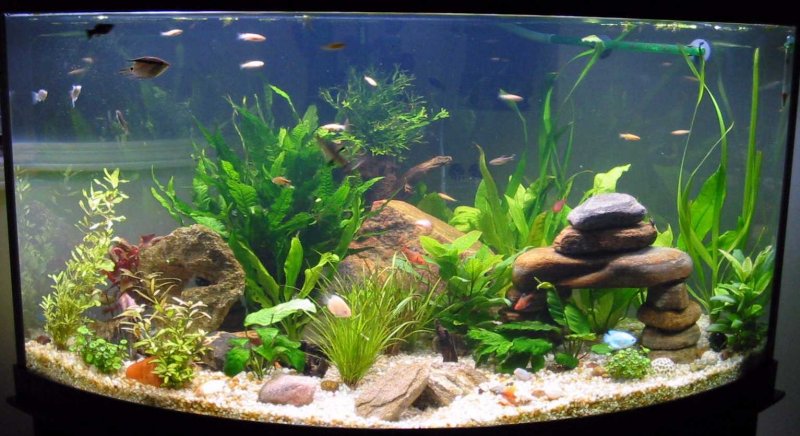 Fish breeders are recording tripled incomes as demand for ornamental fish which have become common place in modern homes burgeons , with the price of ornamental fish outstripping that of ordinary fish by over five times.
Fish breeders are recording tripled incomes as demand for ornamental fish which have become common place in modern homes burgeons , with the price of ornamental fish outstripping that of ordinary fish by over five times.
Golden fish of various colours, hues and sizes swimming gracefully in rectangular shaped enclosures in the wall or a garden pool in the balcony, while radiating households have become hip in modern indoor decor with their beauty driving their uptake in residential houses, offices, and recreational parks among others.
And therein lies the catch for farmers and fish breeders. The size colour and shape have been the determining factor in pricing with customers willing to part with a fortune to stock the alluring beauty. Farmers aware of the ornamental fish frenzy are abandoning traditional fish rearing with their newfound goldmine delivering them as much as five times what they traditionally used to get.
While a tilapia fish would go for Sh300 on average an ornamental fish like koi carp which is famous among customers fetches as high as Sh1500. And customers have no pain buying them. “I have heard a customer who once bought all 20 of the ornamental fish in my pond during my trial period. That is when I realized there is money there. We cant match up with the demand. It is fanatical,” said Alex Munjiru a fish farmer in Sagana who has traditionally invested in ordinary fish farming.
William Kiama a farmer in Kirinyaga sells one ornamental fish for as high as Sh5,000. One of his 25 by 10 metre ponds contains a stock of fish worth over sh1million. None will end up on the dinner plate. But just like cut flowers, they will be purchased for their alluring beauty.
I have 2000 koi carp in this pond and I am waiting for them to attain eight inches. I will sell them at about Sh800 and Sh1, 000. Currently, they are four inches long and there is a ready market for sh400 a piece, but I would rather wait, Mr Kiama said. According to Mr. Kiama who has built a name as a respected ornamental fish breeder who hosts guests from across East Africa, two inches is the minimum size a customer can purchase.
Kiama a former civil servant who tried his hand in various farming ventures including horticulture landed into fish farming by accident. Initially, he had only intended to have a small pond to rear tilapia for his family. After quitting the civil service, where he worked in the registration of persons department, occasionally sought casual jobs at the government owned Sagana Fisheries firm. It is here that the got some training on fishpond construction and rearing.
He put up a pond on his four-acre farm, measuring 10by 5 metres an introduced 500 tilapia, but as an afterthought, he put in 50 goldfish continued to reproductive. After eight months he harvested 600 gold fish, which he sold at shs60 a piece pocketing shs36,000. It was then that he realized the beauty of fish could bring more money than its nutritional value.
His one pond has yielded 22 others with seven now stocked with ornamental fish/. They occupy a quarter of his farm. The farmer still keep tilapia and catfish, but it is the fold fish that now rules. The ornamental varieties he breeds include oranda, oranda caiclo shubunkin, black moor, Siamese doll, koi crp and sarasa comet. Mr. Kiama now offers ornamental fish rearing classes to customers in Kenya and Uganda.
Goldfish are known to consume their eggs and one has to be trained on how to deal with this. Special floating nets are also essential to enable one to separate the breeding stock from the rest, and keep the fingerlings on their own.
According to Mr. Kiama initial capital and water are the biggest hurdles in this kind of farming. For those close to a river, it is less of an issue but one still needs a water pump and pipes since the ponds cannot be constructed next to the river, thanks to theft and fish predators. If the soil has less clay, then a pond liner is needed.
For a 10 by 5 metres pond, one may need up to sh100,000, inclusive of the cost of water and the liner. Some sh22,000 will be for the pond liner, and sh10,000 for excavation. Feeds would consume sh15,000 in five months and the cost of post fingerlings (20 females and 10 males) would be sh4,500. The rest of the money goes into either purchasing water from bowsers or the cost of water pump and pipes. The 30 fish would give about 1500 offspring after five months and one my opt to sell 1,000 post fingerlings at shs100 each earning Sh100,000.
Israel has some of the world’s rarest and most expensive varieties of ornamental fish. According to FAO, the global export earnings from ornamental fish trade is $251 million and more than 60% of the production comes from the households of developing countries. The wholesale value of the global ornamental fish trade is estimated to be $1 Billion while the retail value is $6 Billion. The entire industry, including accessories and fish feed, is estimated to be worth more than US $14 Billion. More than 2,500 species are traded and some 30-35 species of fresh water fish dominate the market. The trade has an annual growth rate of 8 percent.
















Comments powered by CComment